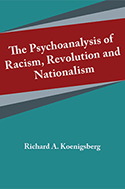|
|||
Ronnie Lipschutz (1998) states that the logic of national security is “exclusionist.” It draws boundaries to differentiate within from without. Secure borders mean “differentiating self from others.” “Enemies” constitute the essence of the state, defining “national security.” The enemy is the alien that cannot be allowed to penetrate. The country's boundary separates badness from goodness—protecting the national self. One’s own nation is defined as absolutely good. And the enemy is defined as absolutely bad (or evil). Badness is defined as what does not belong within the boundaries of the nation. Enemies are entities whose presence within the national body is forbidden. Political violence revolves around destroying badness to preserve goodness. War is generated when badness is located outside national boundaries. Genocide involves destroying badness identified with “internal enemies.” In either case, the nation's purity and goodness must be preserved at all costs. Like a human body whose immune system rejects what is not-self, the nation must not allow “aliens” to be present within its borders. Josefina Alvarez (2006) suggests that borders are the very “walls of the edifice of the state, separating inside from outside.” Security discourses function to “name dangers,” to define enemies. The idea of an enemy is part and parcel of the idea of the nation. Nations exist to wage a struggle to destroy or eliminate enemies. War and genocide may be thought of as a response to “infection:” a disease endangering the body politic. War and genocide are psychosomatic phenomena: the struggle against pathogens that threaten the nation's health. According to Paul Kahn (2013), the figure of the enemy is constructed based on a perspective on territory: “The enemy penetrates the border.” This transgression—penetrating the border—makes someone an enemy even if he does relatively little harm, and regardless of whether he damages public or private property. Borders, Kahn says, represent the integrity of the state. Thus, to eliminate the modern state means to erase its borders. Wars begin with a border penetration; and end when the enemy is driven back across the border. The border becomes a geographical representation of national existence. A cross-border threat, regardless of how limited, motivates an extreme response. Since 9/11, Kahn says, the United States has been in a frenzy of border protection. For warfare and genocide to occur, human beings must identify deeply with their own nation. This is the bedrock of political violence: a necessary (although not sufficient) variable. Further, it would appear, violent political actors identify their bodies with a body politic. Everything follows from this equation of one’s own body with a body politic. We may say that the individual projects his body into the external world—experiencing himself as a body politic. Or that the individual internalizes the idea of the nation into himself—imagining that his nation exists within. |
